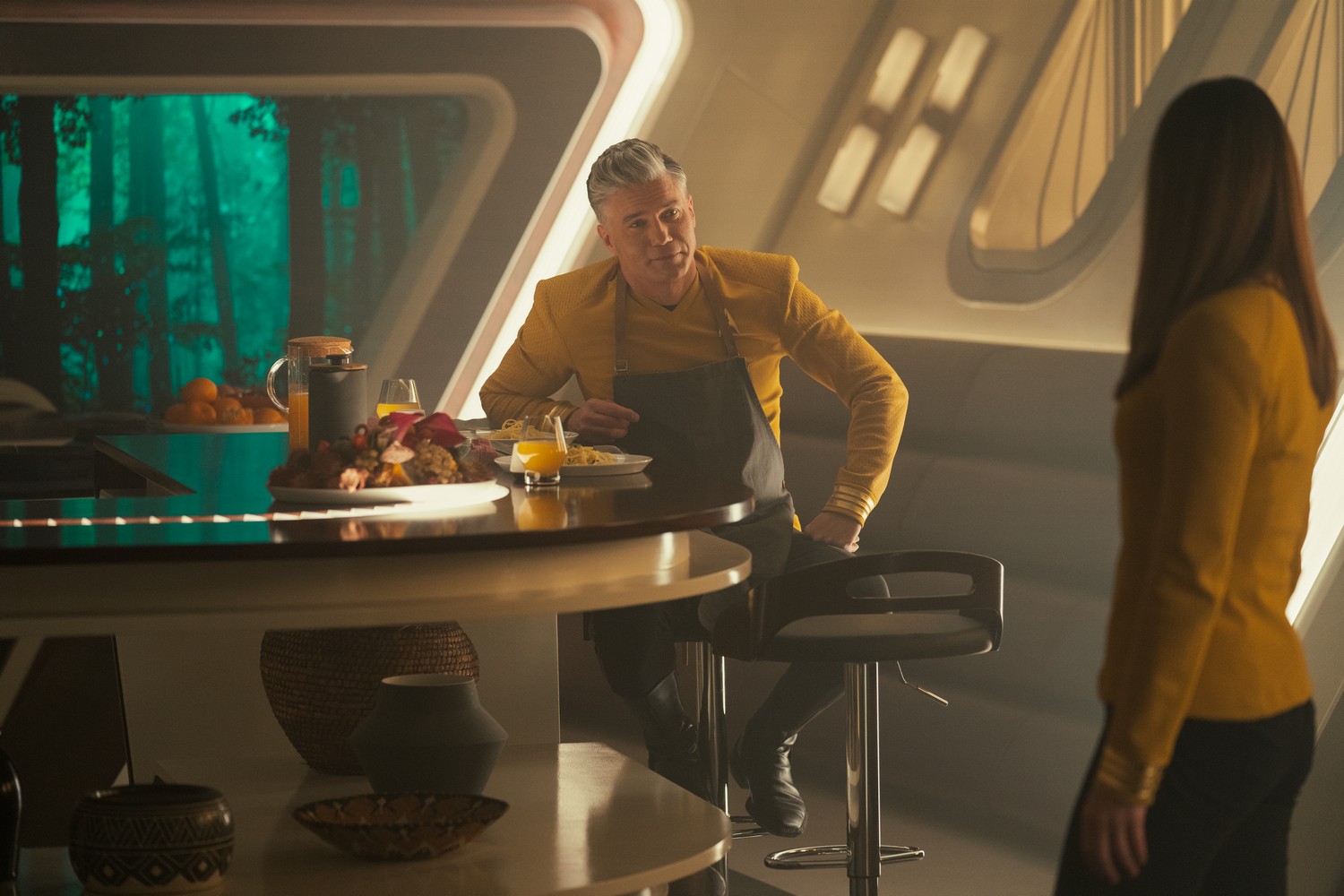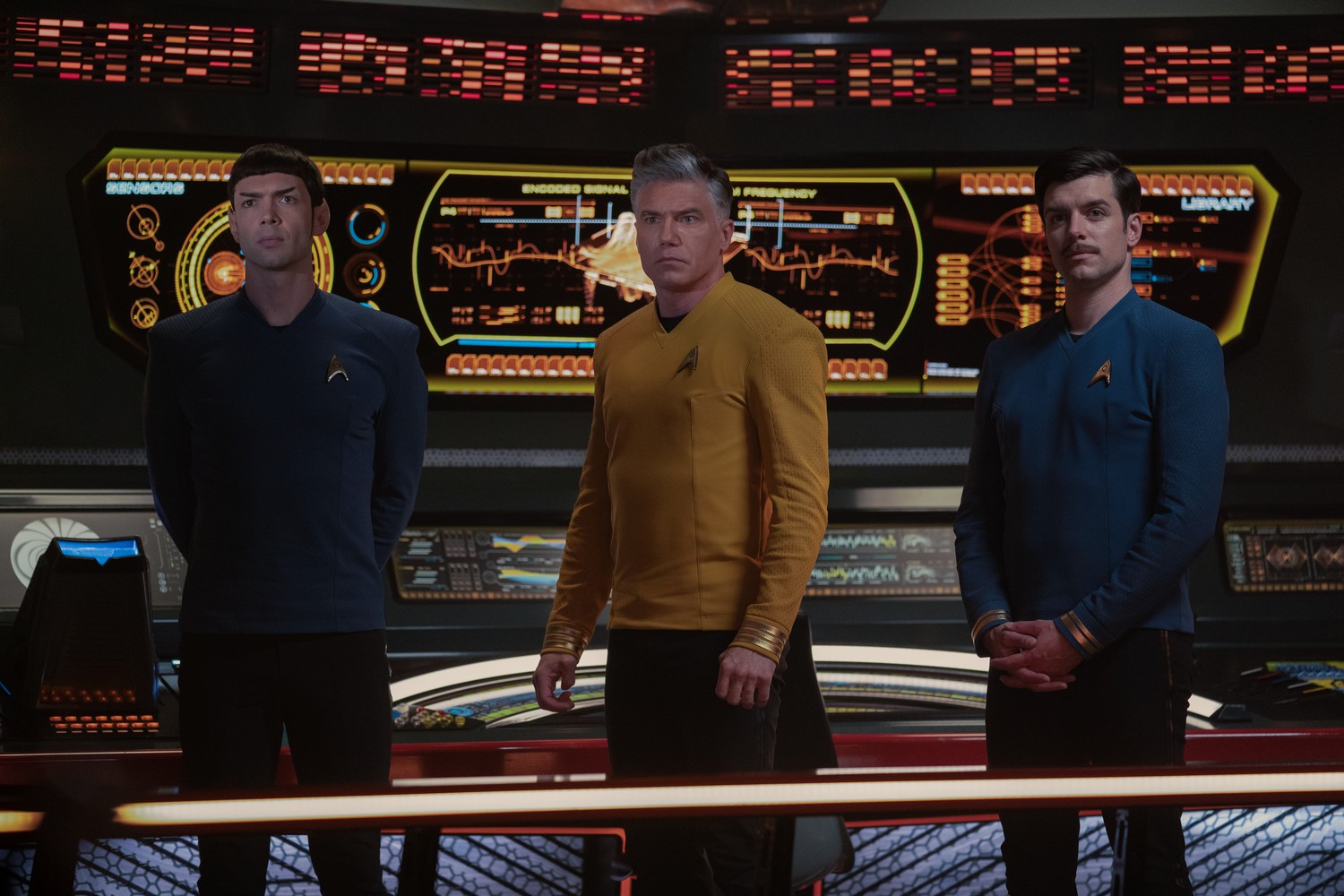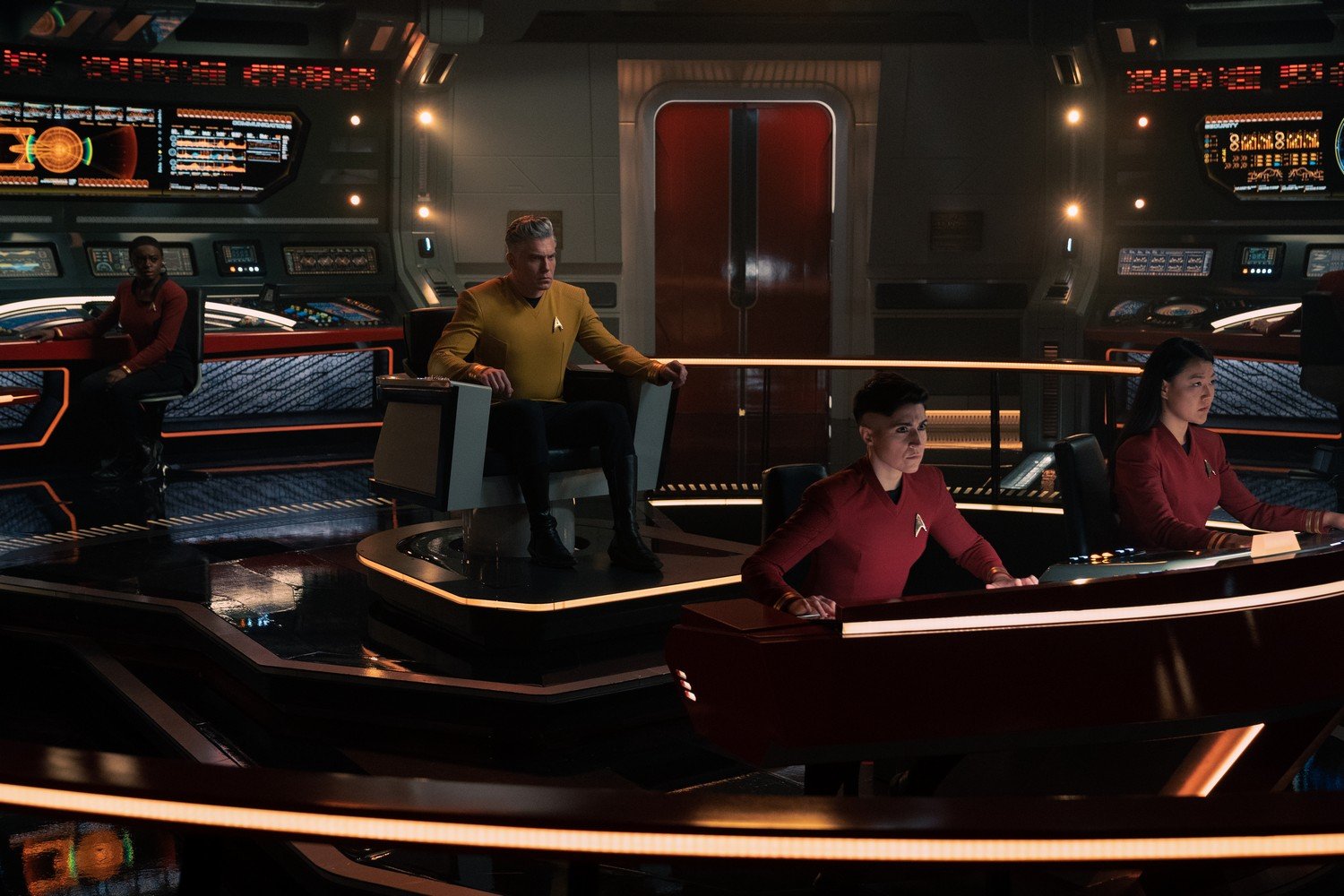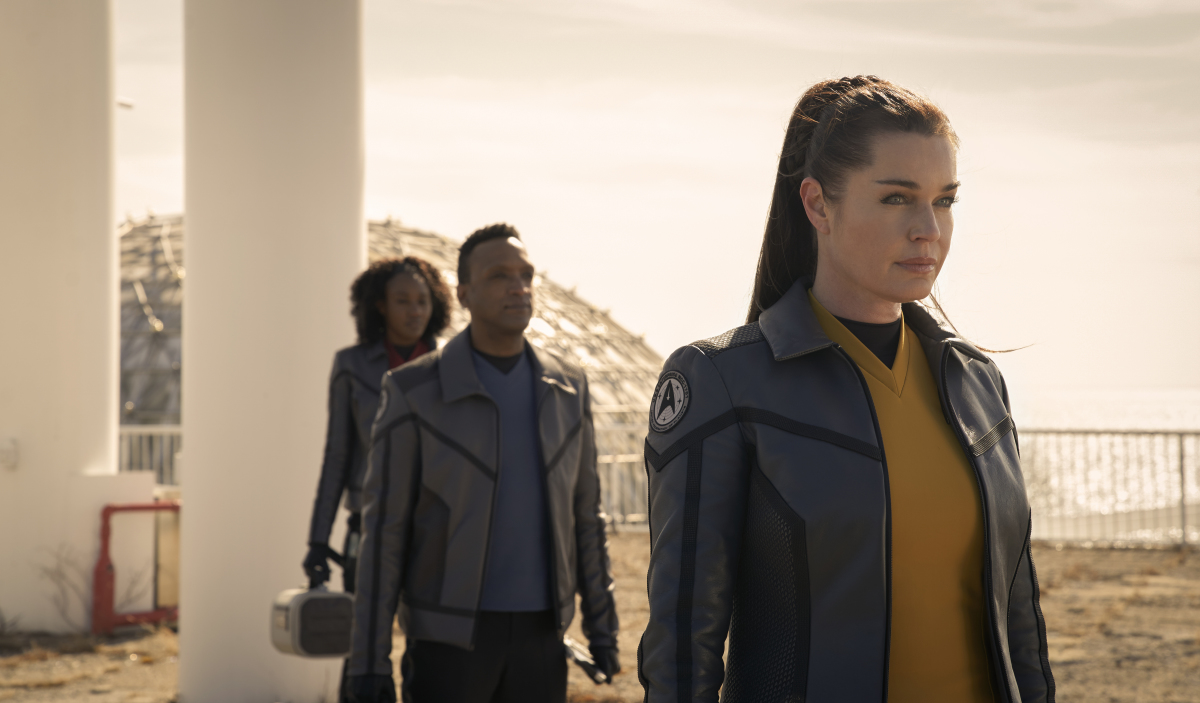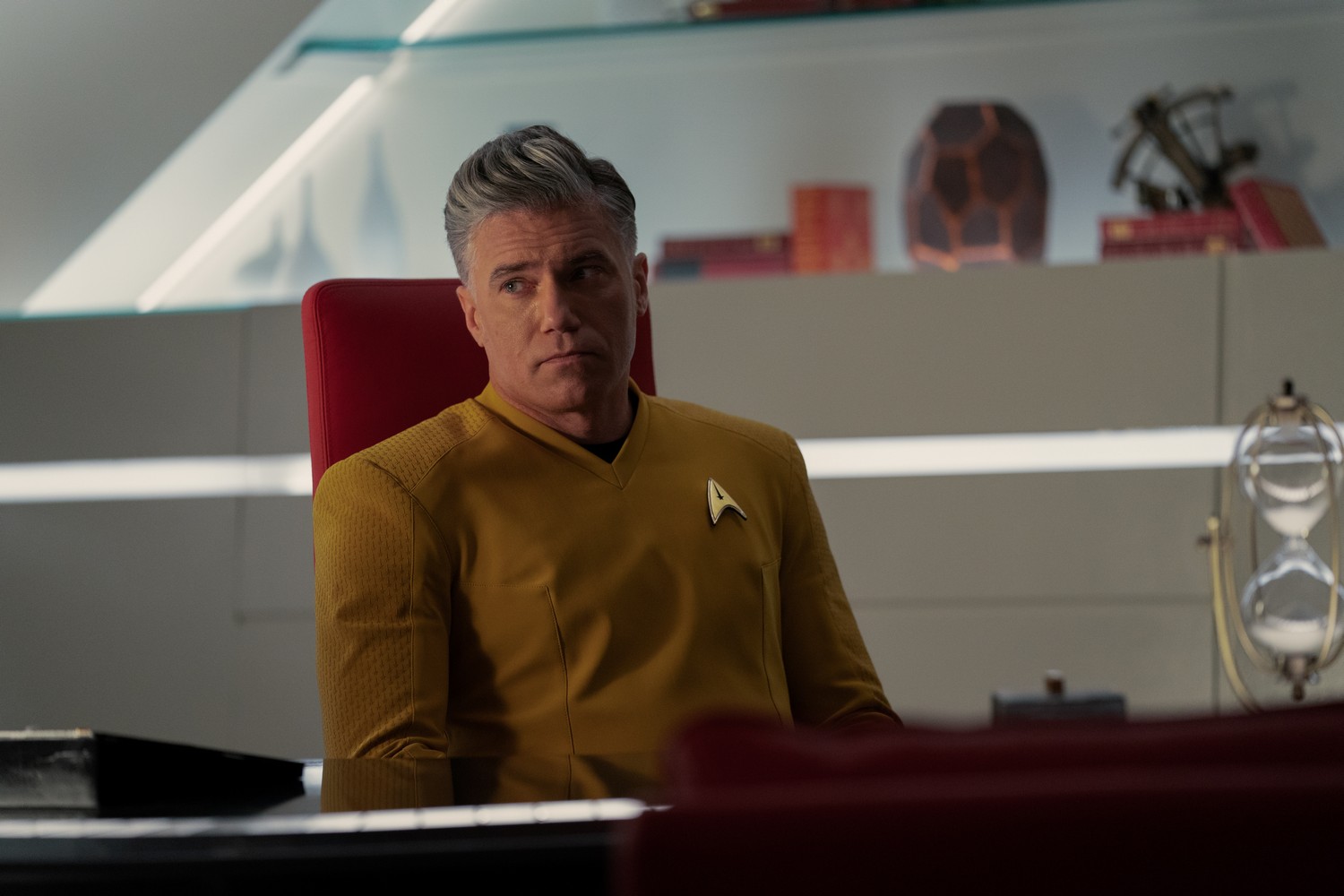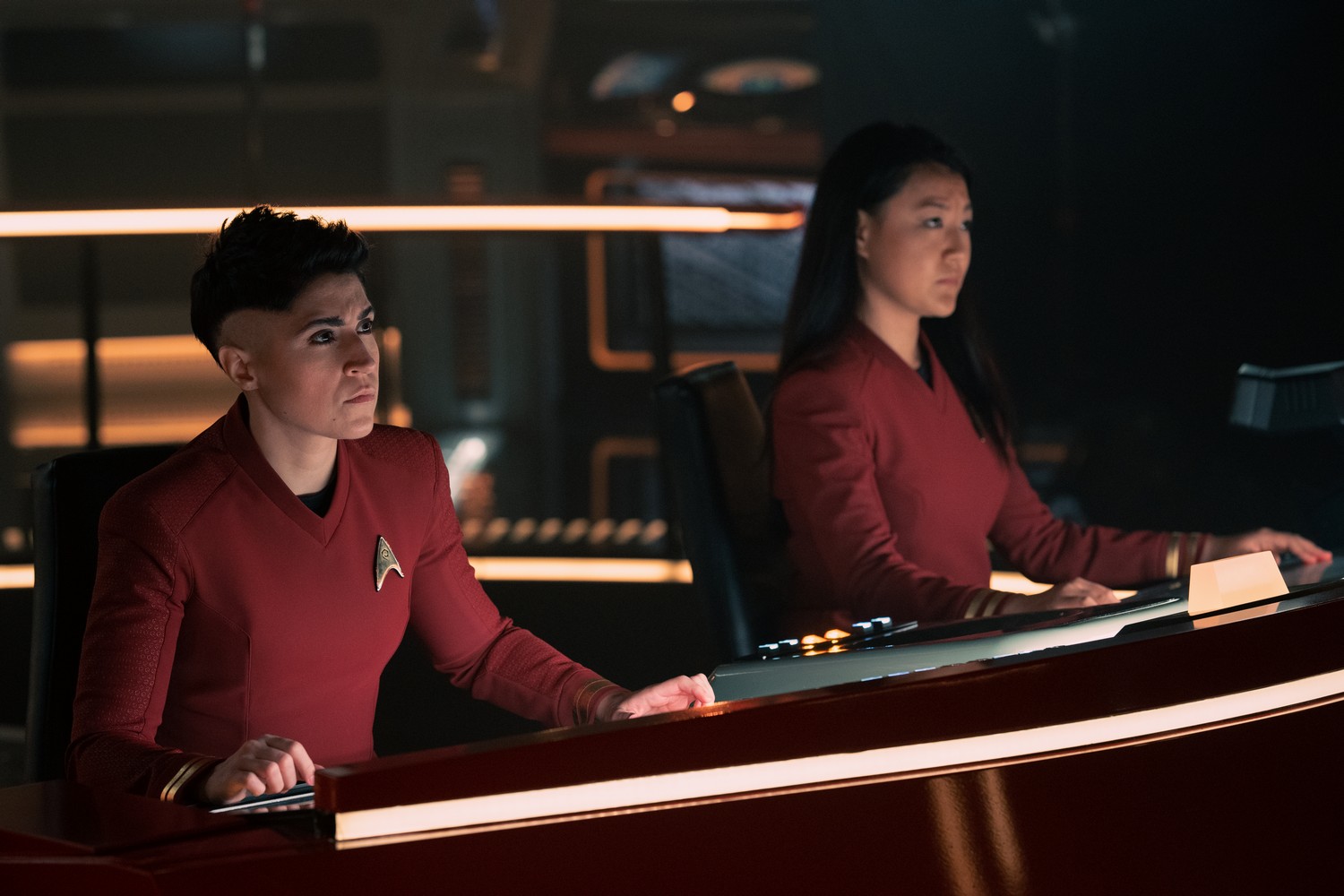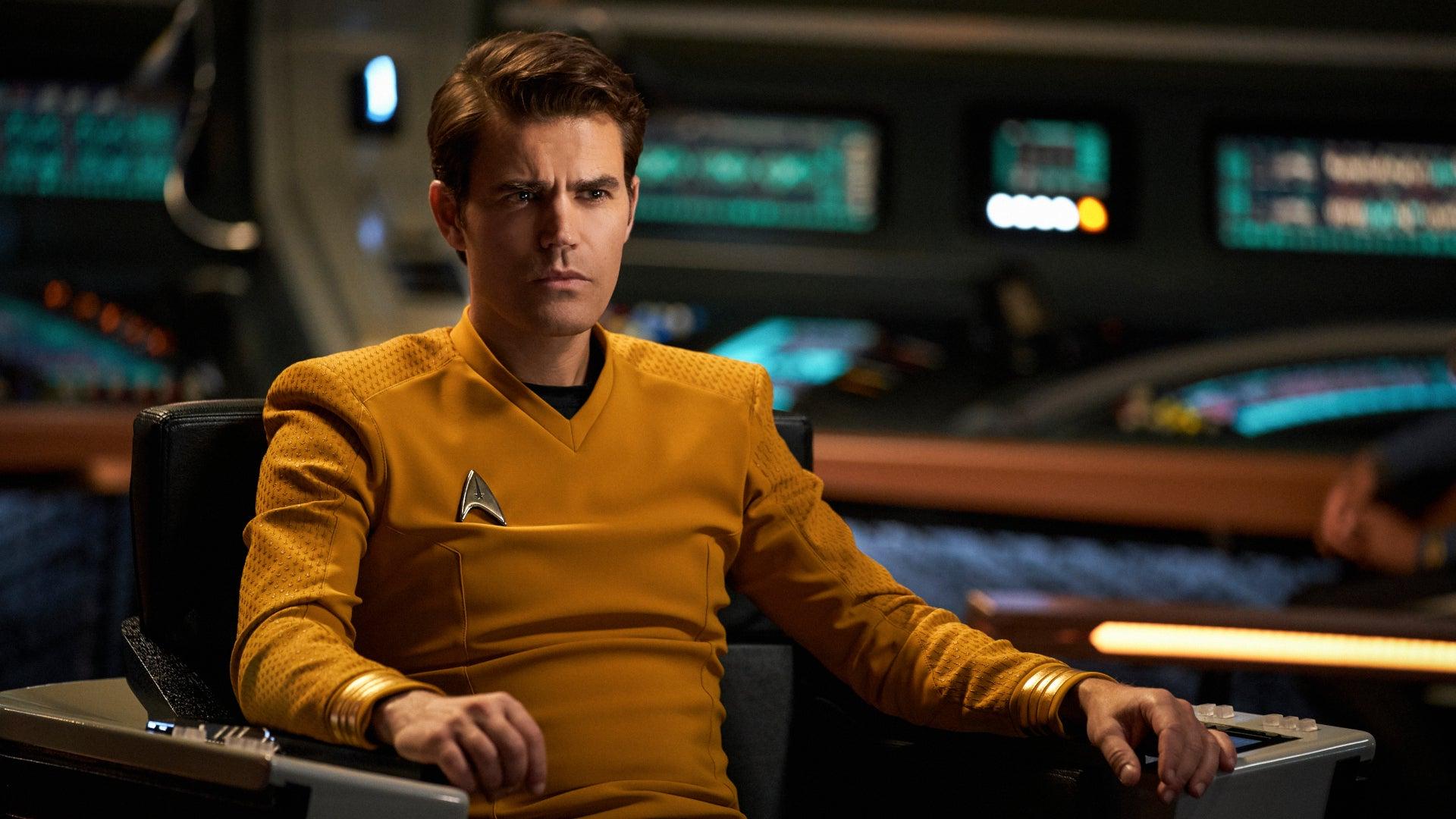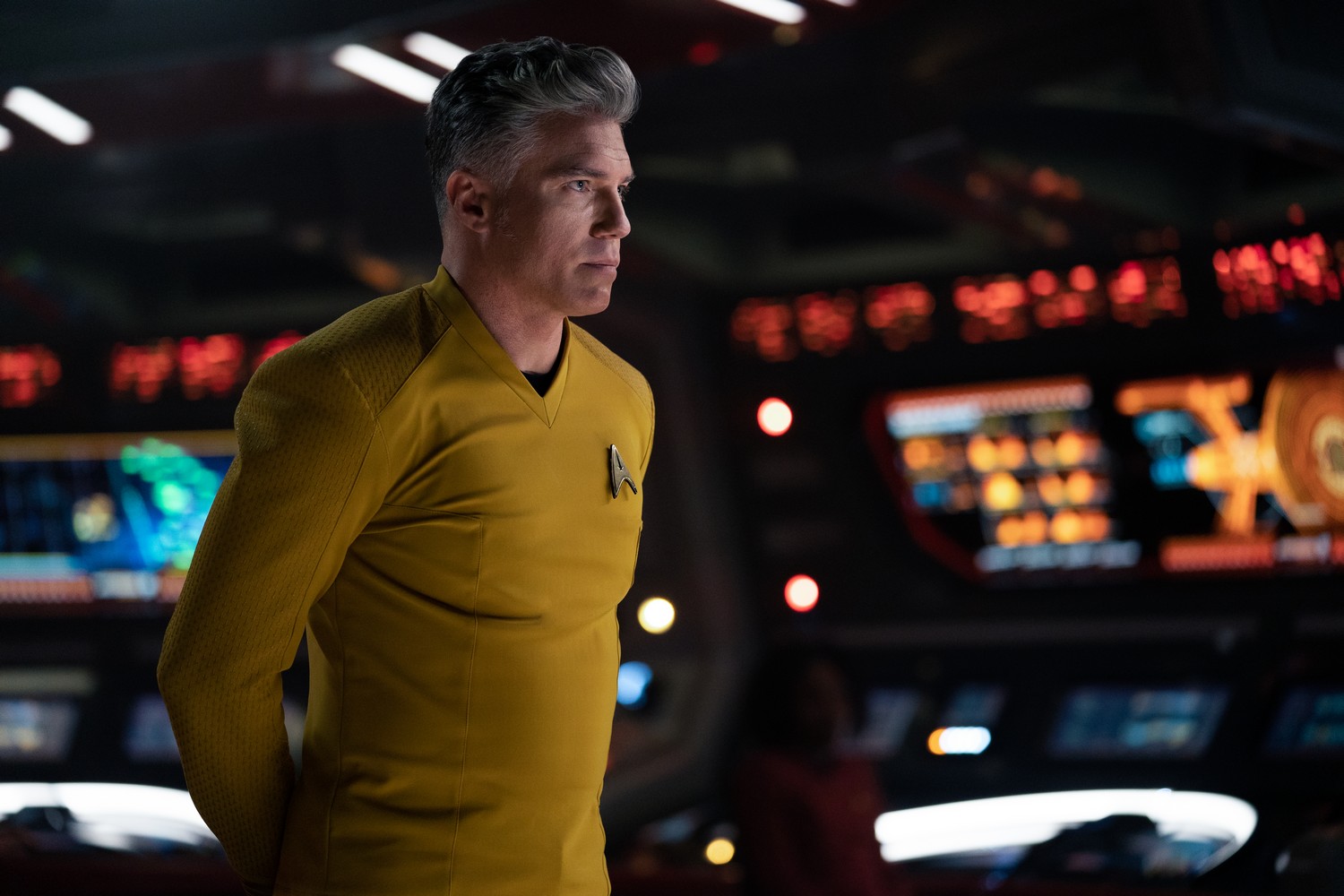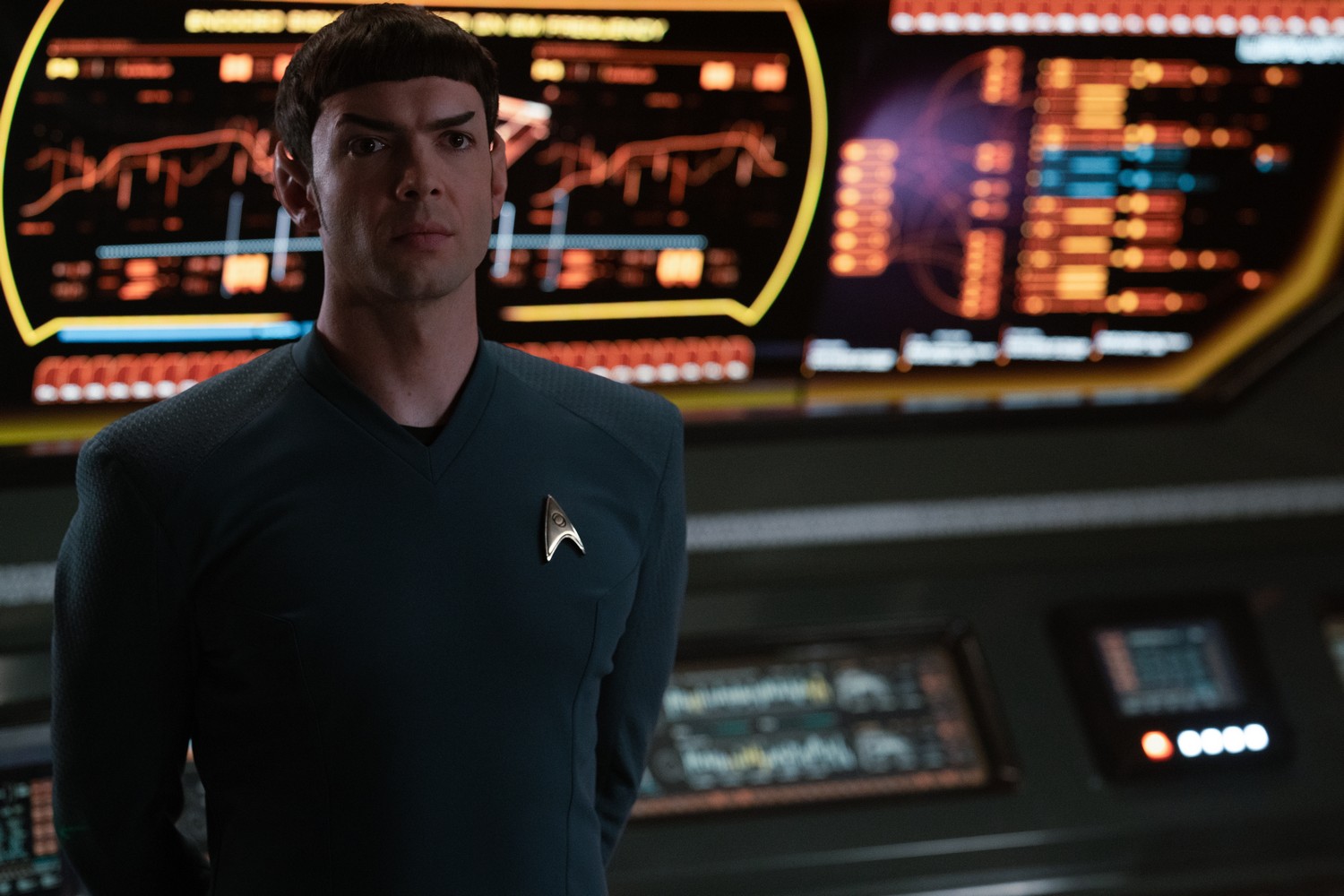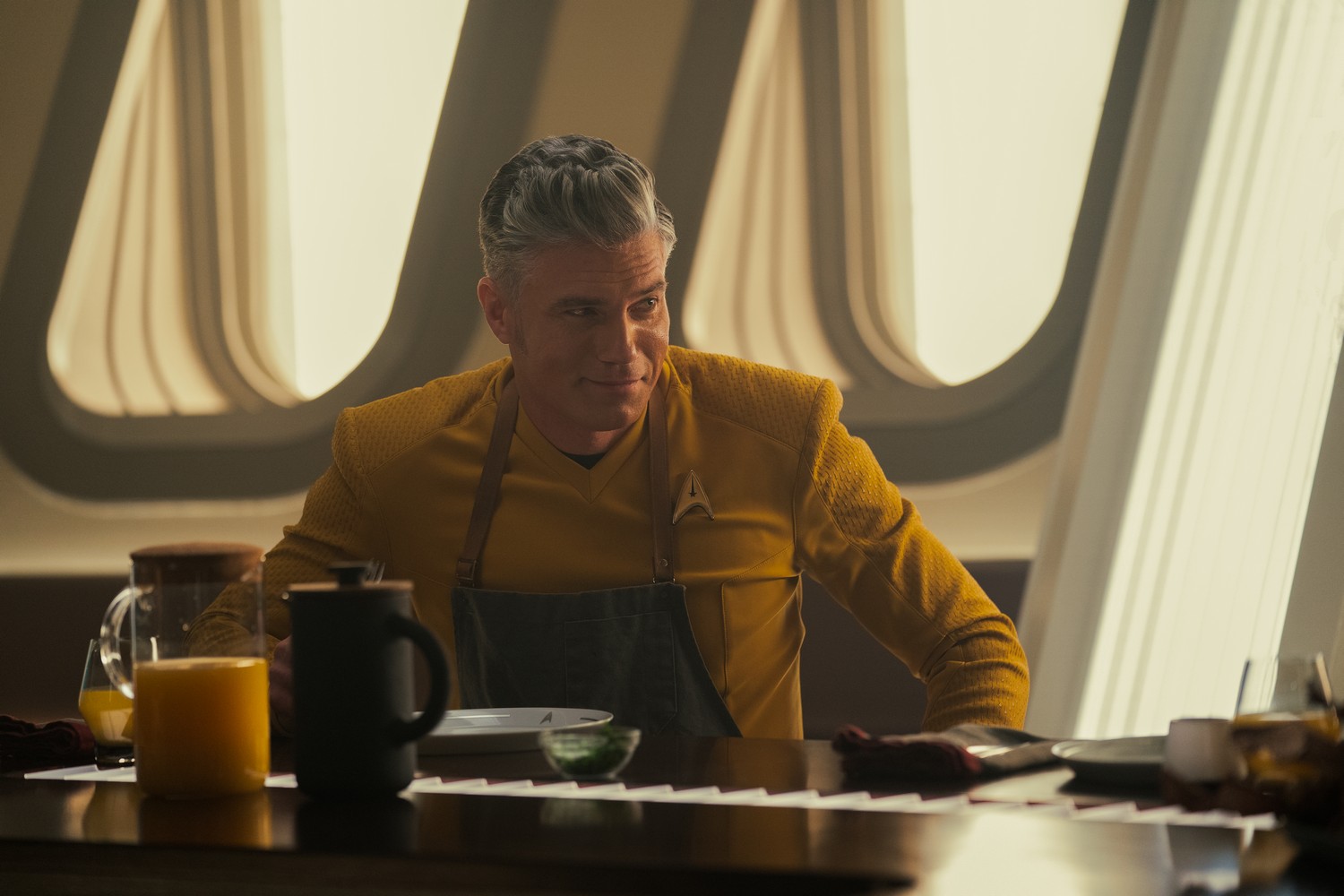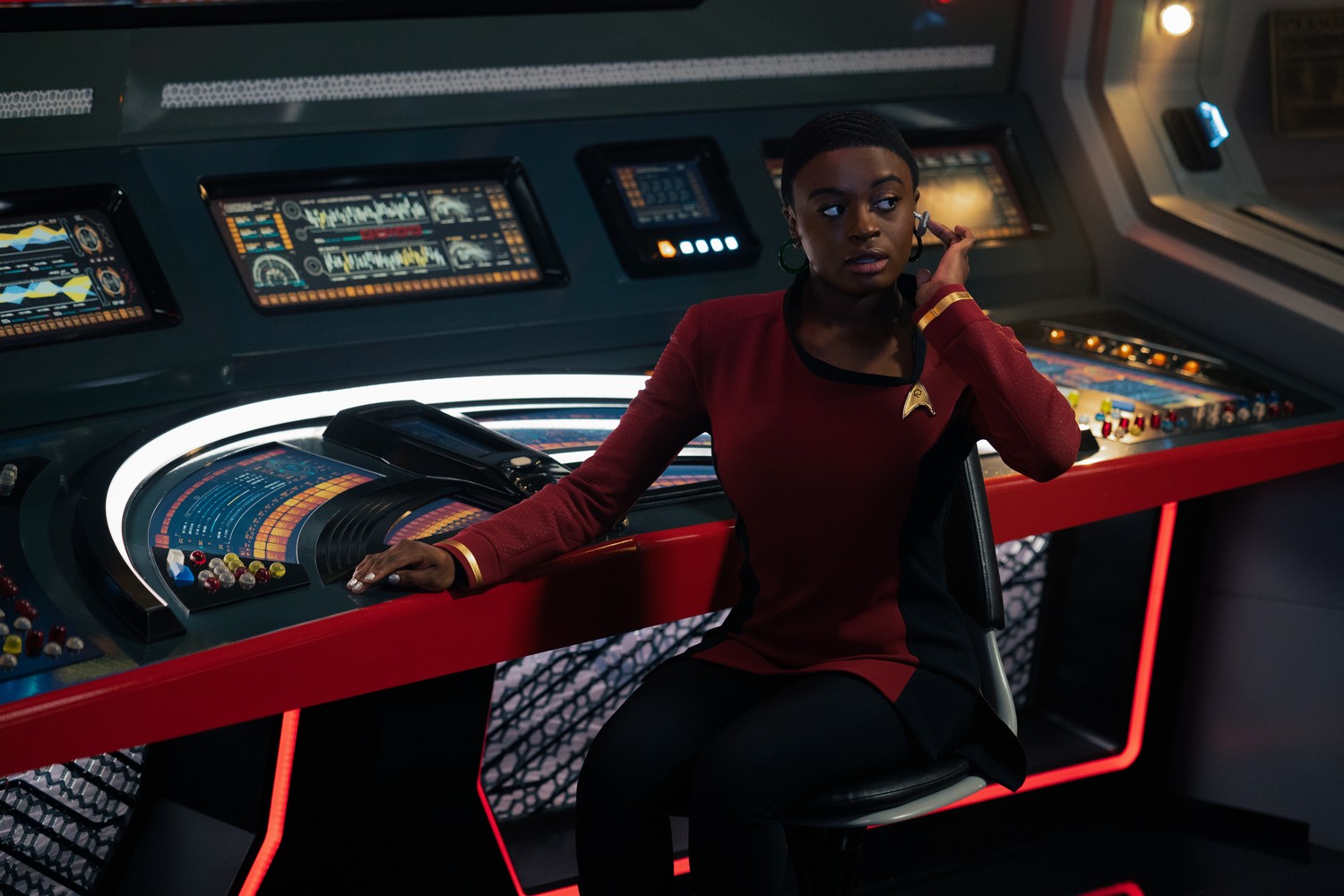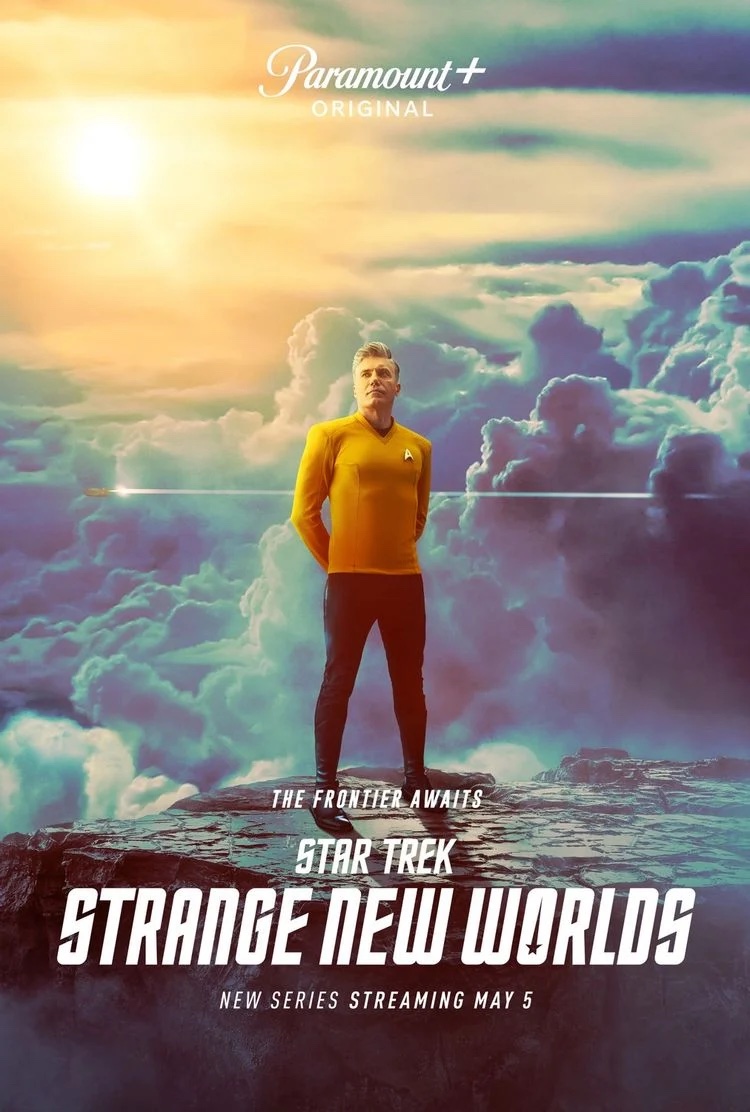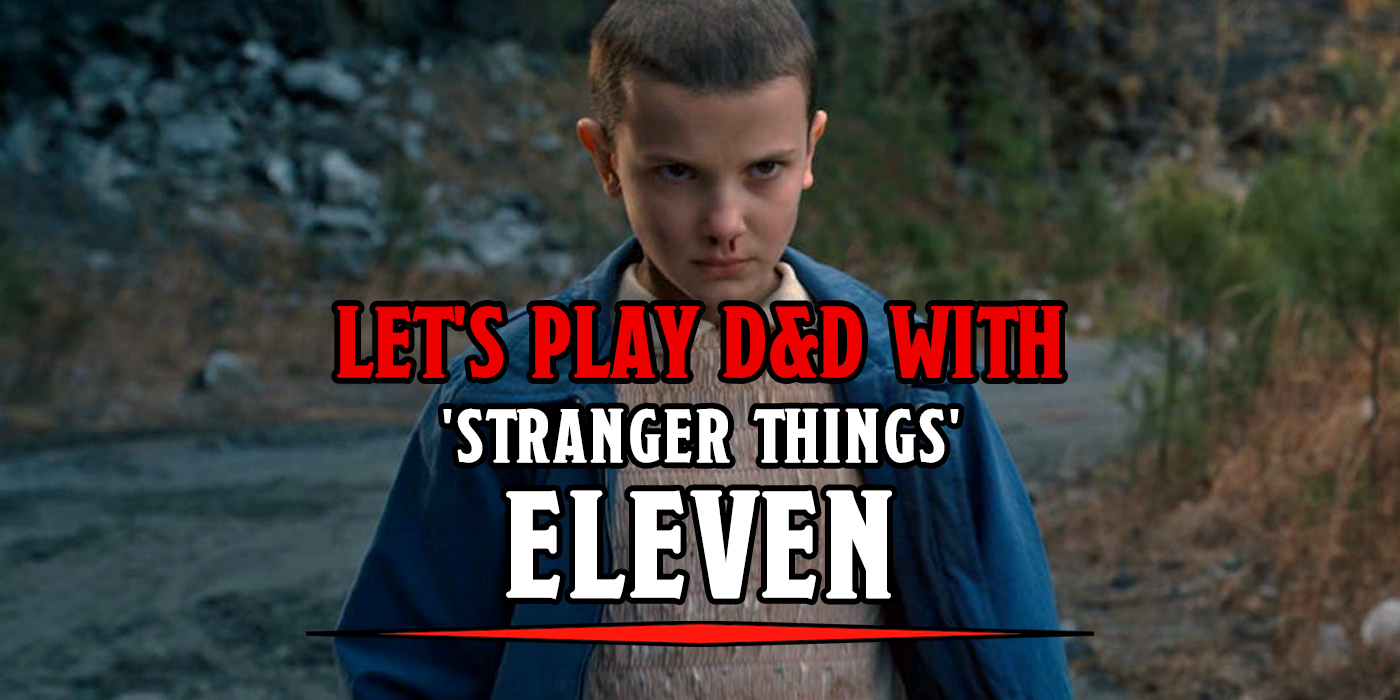‘Star Trek: Strange New Worlds’ “A Quality of Mercy” is an Imbalance of Terror
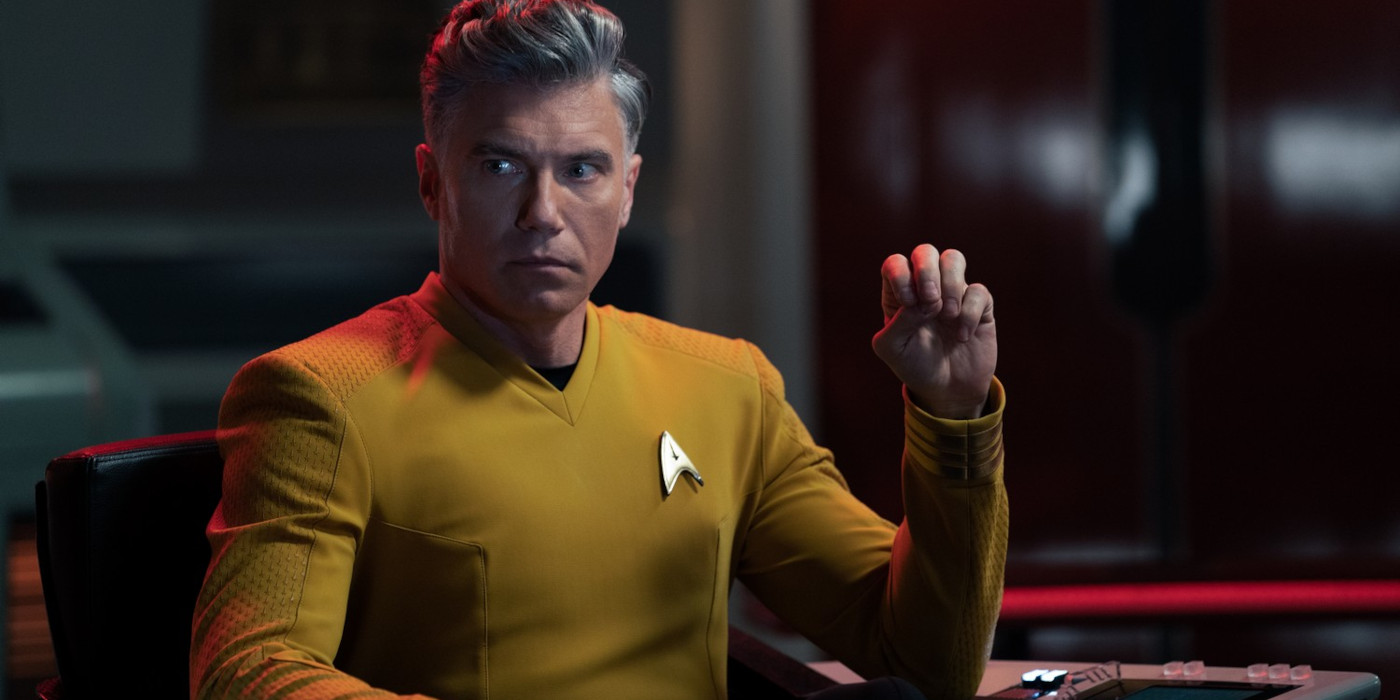

While visiting an outpost along the neutral zone, Christopher Pike comes face to face with his future and learns why it cannot be changed.
Well, here we are. Star Trek: Strange New Worlds is officially one season old. In its first 10 episodes, SNW took on political extremists, singing comets, pirates, the Gorn, and everything in between. But for every vanquished foe, every day saved, one consistent loss remains: in seven years Pike will effectively die. In “A Quality of Mercy” we learn why that fact is irrevocable.
To Boldly Recap
Christopher Pike meets one of two cadets who, in seven years, he knows he will fail to save. In a moment of grief he writes a letter to the cadet warning him of his fate. But before he can finish, a future version of Pike appears. Future Pike says that changing the future by writing to all the cadets does work – but there’s a catch. Changing the future makes things much worse. In order to prove it, future Pike uses a Klingon time crystal to launch our Pike seven years into the future to see exactly how things go wrong.
Upon arriving in the future, Pike learns that the same outpost he was just at is under attack by a mysterious vessel. Pike takes his current first officer, Mr. Spock, into his confidence. Pike explains he is from the past and Spock concludes that, to understand what makes these version of events so bad, Pike must simply live them.
In short order the commander of the outpost contacts Enterprise just in time to be destroyed – by the Romulans. As quickly as it appears, the Romulan vessel cloaks and begins heading back towards Romulan Space. However, Enterprise is not the only ship in range of this attack – the USS Farragut arrives as well captained by James T. Kirk.
Spock hypothesizes that the Romulan ship flies blind while in cloak. Kirk recommends that the Enterprise and the Farragut shadow the Romulan vessel in an attempt to catch it before it can escape to Romulan Space. Pike agrees.
Later, Spock intercepts a transmission from the Romulan ship. Viewing reveals, for the first time, what the Romulans look like. It turns out they look almost exactly like the Vulcans.
Pincer
With limited facts at hand, Pike convenes senior officers and Captain Kirk in the conference room. After Ortegas is weirdly racist towards Spock, options are discussed with most agreeing attacking the Romulans is the best way to prevent war. However, Pike disagrees and Kirk offers a compromise. Using a nearby comet, the Enterprise and the Farragut can sneak around the Romulan vessel and pin it down into surrender.
Unfortunately, the Romulans predict this move, sneak up behind the Farragut and attack. The Farragut is rendered useless and the Enterprise is also largely damaged. However, Enterprise damages the Romulan ship as well. And after beaming the Farragut crew aboard, Pike hails the Romulan ship. Pike comes face to face with the Romulan commander, offers two hours ceasefire to repair respective ships and bury the dead. Fighting can resume after, or the door towards peace can open. The Romulan commander agrees to the terms.
At this point, two things happen: the Romulan commander and his subcommander argue tactics with the commander insisting they allow for the possibility of peace. Meanwhile, Kirk tells Pike he thinks the Romulans will call for reinforcements and suggests Pike do the same. And even though no Federation ships are nearby, Kirk takes a shuttle to seek alternate reinforcement options.
At two hours, Pike offers the Romulan commander a chance for peace talks. But just as the commander agrees, a fleet of Romulan ships appear. The Romulan’s subcommander has betrayed him.
War
The new Romulan flagship hails Pike and the Praetor on board demands Pike’s unconditional surrender. Just in time, Kirk arrives with a fleet of unmanned, automated mining vessels. Assuming the Romulans don’t know what Federation ships look like, Kirk and Pike decide to bluff using the fake fleet they have available.
On the plus side, talks resume, albeit briefly. On the minus side, the Romulan praetor, seeing that her commander was caught destroying the Federation outposts, destroys him and his ship. And then she attacks Pike. Kirk is able to protect Enterprise long enough for them (and he) to escape. But it’s too late. The Romulans declare open war on the Federation.
Spock is critically injured, rendering his body as destroyed as Pike’s is supposed to be in his supposedly inevitable future. Future Pike returns and tells himself that war with the Romulans is still going on. Future Pike also tells his past self that all attempts to alter the future result in Spock’s death and that the future needs Spock.
After a talk with Kirk, Pike returns to his own time and deletes his letter to the cadet he planned to save early.
Just One More Thing
During Pike’s trip through time he finds out from La’an that Una is in prison. Specifically she is in prison for treason – because she hid the fact that she is an Illyrian. In case you forgot, the Illyrians are banned from the Federation because their society is built around genetic modifications and gene tampering is outlawed because of the Augment Wars. According to La’an, no one has seen Una in seven years.
When Pike returns to his time he thinks everything is normal, but it isn’t. A Starfleet team beams aboard Enterprise and arrests Una. Pike vows that he will find a way to save her.
To Boldly Review
At its heart, “A Quality of Mercy” is a what-if story. Throughout Strange New World‘s first season, we are repeatedly reminded that Pike’s future is a fixed point in time. In seven years, Pike will save a number of Starfleet cadets and melt into a barely-living husk in exchange. Pike’s sacrifice more than saves lives, it leaves the Enterprise captain’s chair open. James Kirk takes that chair and that, in turn, informs the shape of the entire remainder of the Star Trek continuity as we know it. Pike must sacrifice himself for all that to happen.
But what if he just.. doesn’t? What if Pike saves those cadets early, and, in the process, saves himself? What happens then? It’s a big question. For Pike it’s a big question because so much of his identity is tied to his ultimate fate. For Strange New Worlds itself it’s a big question because Pike has to face his fate in order for the series to fit into the rest of Star Trek continuity. Hypothetically, this conceit seems like the perfect way to close out the first season of Strange New Worlds.
Unfortunately, this what-if scenario is so poorly executed, it’s potential so squandered, that we are left with what is easily the worst episode of this entire season. More than that, the specific mistakes made in this episode reveal exactly why Pike’s knowledge of his own fate is so dangerous to the future success of this show.
“A Quality of Mercy” threatens the kind of bad, long-form storytelling that could ruin the best Star Trek series in decades.
Balance of Terror
In the Star Trek: The Original Series episode “Balance of Terror” Captain James T. Kirk must outwit a cunning Romulan commander whose firepower is superior and whose ship Kirk cannot even see. Kirk’s orders are simple: defeat the Romulans and prevent war, even if the cost is the Enterprise and her crew.
Sound familiar?
But “A Quality of Mercy” doesn’t just reuse the premise of “Balance of Terror,” it repeats whole chunks of dialogue from that episode word-for-word, causing some of the crew to behave wildly out of character. And the crewmember who best exemplifies this problem is Erica Ortegas. Gone is the upbeat, lovable helmsman we’ve come to know and, in her place, we get an angry racist. With no explanation beyond, “it’s been seven years” Ortegas is suddenly a totally different character.
And the actual reason Ortegas is so different is because she is parroting the dialogue of a completely different character named Lieutenant Stiles.
In “Balance of Terror” we meet Stiles and learn that he lost family during the Earth-Romulan War. As a result, he is aggressive in his response to the Romulans’ attack. And when Stiles sees that Spock and the Romulan commander look virtually identical, he assumes Spock has secretly been the enemy all along.
For Stiles, this character arc makes sense. For Ortegas, it makes no sense at all.
Did Ortegas lose family in the Earth-Romulan War? If she did, “A Quality of Mercy” does not share that fact with the audience. So, why is Ortegas acting like Stiles? Foundationally, why is almost everyone on the Enterprise acting so out-of-character in this episode? The only answer available is that these are not the characters we know, but, rather reskins of characters from a completely different Star Trek show.
James T. Kirk
We know James T. Kirk is set to appear in season two of Star Trek: Strange New Worlds. His appearance in the show’s first season finale should feel like Christmas came early. It doesn’t. The problem is not Paul Wesley’s performance as Kirk, but, rather the circumstances in which we are first meeting his incarnation of the character.
Thirteen episodes of Star Trek: The Original Series precede “Balance of Terror”. And in those thirteen episodes William Shatner shows us many facets of his version of James Kirk. We see Kirk as a friend, as a romantic, and, more important than anything, we see him as an affable goof. Shatner’s Kirk is a thick slice of ham before “Balance of Terror”. So when Kirk suddenly has to be completely serious, it’s unexpected and riveting. We know he’s fun, but we also know he can’t be fun this time. That’s the balance.
All we know of Wesley’s Kirk is how he acts in the most dire of circumstances. And while “A Quality of Mercy” explores moments where Kirk can be clever and find unexpected solutions in the moment, Wesley’s version is, for the most part, serious as a heart attack. He has to be. The lives of everyone in the Federation are on the line. But that means we don’t really know what makes this Kirk lovable.
Pike meeting Kirk for the first time is a big deal! But without knowing who Wesley’s Kirk is, the entire enterprise (if you’ll forgive the pun) feels hollow and lacking.
Pike’s Destiny
The biggest problem with “A Quality of Mercy” is not its poor characterizations or its substandard re-envisioning of one of Star Trek‘s best stories. The real issue boils down to one question: why is Pike’s fate set in stone? Meta textually we know why Pike has to sacrifice himself – it’s because that’s how Kirk becomes captain of the Enterprise. But “because continuity” is not a satisfying in-universe explanation.
That is why Pike knowing his fate in the first place was always such a dicey proposition. Self-preservation is at the core of human nature, so, given time, of course Pike is going to try and get out of literally melting. And avoiding that fate is actually really easy – a fact “A Quality of Mercy” makes abundantly clear.
So a new reason is devised for why Pike must sacrifice himself. If Pike remains Enterprise captain he will encounter the Romulans instead of Kirk. And Pike is too empathic a leader to handle that scenario aggressively enough to avoid war with the Romulans.
Except, “A Quality of Mercy” is in Pike’s future. And since Pike goes back in time at the end of the episode, he can simply alter his actions when the time comes and act exactly as Kirk did thus avoiding war with the Romulans. And that means there has to be another reason why Pike’s fate cannot change. So we keep circling the drain of fate until we arrive at a solution so inane it defies all logic.
Spock
“A Quality of Mercy” spends much of its runtime focused on Kirk’s place in history, leading us to believe that his life is the one which matters most. However, at the last second, Spock is the one who sacrifices himself and becomes as melty as Pike is supposed to be.
Future Pike tells his past self that Spock is incredibly necessary to the future. More than that, future Pike says that, no matter how Pike tries to change the future, Spock’s life is always the price.
First things, first: Spock is important. No one will deny that. Spock’s use of logic keeps his crewmates alive. And, conversely, Spock’s ability to engage with his own emotions selflessly is another reason the Enterprise and her crew survive and save the day on multiple occasions. But in neither “Balance of Terror” nor “A Quality of Mercy” is Spock the deciding factor in the crew’s survival. In fact, in the latter instance, war with the Romulans still happens despite Spock’s sacrifice. So the explanation future Pike gives makes no sense.
But more than that: how is it possible for Spock, in all potential permutations, to always be the price of Pike’s attempts at survival? Only two things can make that possible: an evil god or hack writing. So unless future Pike isn’t really Pike at all (and we’ve been given no indication of that), the answer is that the creators of this show wrote themselves and their characters into a corner.
Why Strange New Worlds is Great
This first season of Star Trek: Strange New Worlds is so good. Pike saves the day with his cooking skills. Uhura saves the day with her beautiful singing voice. Hemmer saves the day with the magic of science. The contained stories of Strange New Worlds give us a crew of lovable, flawed, and deeply silly heroes.
No one is pre-destined for greatness. Greatness is a thing we choose. The crew of the Enterprise chooses greatness, often in the most fun way possible, and that is what makes Strange New Worlds great.
Making this show about why everyone’s destiny on the Enterprise is inevitable takes away choice. It shows us the marionettes’ strings. It removes the core of what makes Strange New Worlds great.
I don’t think I’ve ever done this in a review before, but I am doing it now. If you are one of the executive producers of Star Trek: Strange New Worlds and you are reading this right now, I am begging you: alter course. “A Quality of Mercy” represents the worst direction this show can possibly go. If Pike knowing his fate is leaving you and the writers hamstrung, erase everyone’s memories of the future and move on.
Let this show be about the moment, because making it about an inevitable future, much like Pike’s own destiny, is a fate worse than death.
Questions, Queries, Quibbles
There are a few Easter eggs this week. We see some classic Trek lighting on Spock’s eyes for example. We also hear who is probably Scotty’s voice at one point. However, since this is the season finale, let’s focus on the questions for what comes next.
Obviously the immediate questions pertain to Una. Can Pike save her from a life in prison? The one future Pike we meet is unable to. However, that future no longer exists, so anything (other than Pike’s own survival apparently) is possible. But there are a lot of other questions, too. Will Scotty be the one to replace Hemmer? And what will Kirk be like when we meet him next season? Remember: we only know what Kirk might be like in seven years, not who he is now.
What villains can we expect next season? Word on the street is that the Klingons are coming. But the Gorn are still out there. And with Captain Angel in the wind and Sybok briefly teased, it’s likely we’ll see both of them next season as well.
Let us know what you think of “A Quality of Mercy” and let us know what you’re hoping we’ll see in Star Trek: Strange New Worlds season 2.
Until next time, this is your humble recapper signing off. Live long and prosper!

